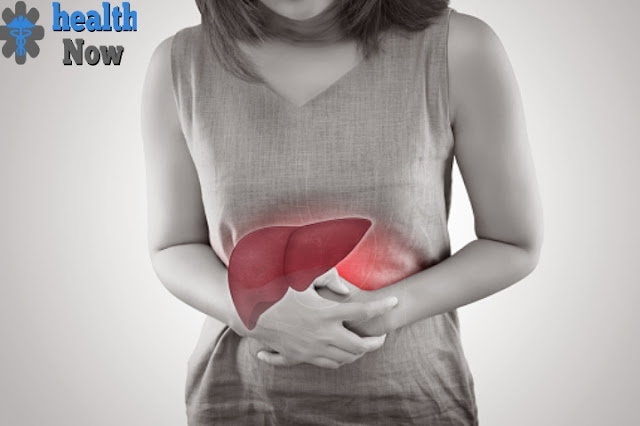Hepatitis A.
Hepatitis A usually spreads when people eat something that has been contaminated with the feces of an infected person.
Hepatitis A causes typical symptoms of viral hepatitis (including decreased appetite, a general feeling of illness, and jaundice) in older children and adults but may not cause any symptoms in young children.
The doctor makes the diagnosis of hepatitis A based on the results of blood tests.
Hepatitis A vaccine is recommended for all children and adults who may be exposed to an infection or develop severe complications of infection.
There is no specific treatment for hepatitis A, but most people recover fully.
Hepatitis An infection is the most widely recognized reason for intense viral CAD. It is particularly normal in kids and youthful grown-ups. Hepatitis A doesn't prompt constant hepatitis. That is, the contamination doesn't endure over a half year.
To hepatitis infection, their invulnerable framework produces antibodies that shield them from reinfection with this infection (they are protected from the infection).
In the United States in 2016, 2,000 cases of hepatitis A were reported, and an estimated 4,000 cases of hepatitis A occurred (many unrecognized or underreported).
The number of cases is significant compared to the number of cases during the years before the hepatitis A vaccine was available in 1995. An estimated 1.4 million cases of hepatitis A occur annually worldwide.
Transmission of hepatitis A virus.
Hepatitis A usually spreads when a person acquires the virus after contact with an object or eating food or drinks that have been contaminated with the stool of an infected person (called the fecal-oral route). Unwashed. Oysters from water that drains contaminated drains can sometimes cause infection when eaten raw.
Hepatitis A is sometimes common in daycare centers, where caregivers and children can come in contact with infected stools in diapers.
People can spread the virus before they have symptoms — before they know they have the infection.
It is also common for epidemics associated with contamination of the water supply usually with feces, especially in developing countries.
Hepatitis A does not cause chronic hepatitis. People can no longer pass the virus on to others after recovering from acute hepatitis.
Symptoms.
Most more seasoned youngsters and grown-ups with hepatitis A have run-of-the-mill side effects of intense hepatitis. These side effects include:
- absence of craving.
- A general sensation of being sick (disquietude).
- spewing.
- Torment in the upper right piece of the mid-region (where the liver is found).
- Dim-hued pee.
- Jaundice (yellowing of the skin and whites of the eyes) in around 70% of individuals.
About 70% of children under the age of 6 have no symptoms, and children who do have symptoms rarely develop jaundice.
Symptoms of cholestasis (reduction or stopping of the flow of bile), such as pale stools and extensive itching, may occur.
Symptoms usually disappear after about two months but may persist or recur over up to 6 months.
Hepatitis A doesn't cause serious scarring of the liver (cirrhosis). Once in a blue moon, hepatitis A becomes serious (fulminant). These cases are a lot more uncommon than those that happen with hepatitis B.
Diagnosis.
Doctors suspect hepatitis A in people who have been exposed to the hepatitis A virus and who have typical symptoms, such as jaundice.
Testing usually begins with blood tests to determine how well the liver is working and whether it is damaged (liver tests). Liver tests involve measuring levels of liver enzymes and other substances produced by the liver.
If tests detect abnormalities in the liver, other blood tests are usually done to check for hepatitis virus infection. These blood tests can detect parts of specific viruses (antigens), specific antibodies that the body produces to fight the virus, and sometimes genetic material (RNA or DNA) of the virus.
Prevention.
Great cleanliness while taking care of food can assist with forestalling the spread of hepatitis A. Individuals ought to clean up with a cleanser and water after utilizing the restroom, in the wake of evolving diapers, and before taking care of the food.
It is also important to avoid using contaminated water supplies. People need to be especially careful when traveling to areas where sanitation may be inadequate.
Hepatitis A vaccine is recommended for all children (see Figure Vaccination of infants and children). It is also recommended for use in adults at high risk of hepatitis A, such as:
- Travelers to parts of the world where hepatitis A is common.
- Workers in diagnostic or research laboratories that deal with the hepatitis A virus.
- Individuals with constant liver issues or draining problems.
- Homosexual men.
- People who use illegal drugs (often getting infections for reasons other than drug use).
- People without stable housing or the homeless.
People with chronic liver disorders (including chronic hepatitis C) should be vaccinated against hepatitis A, as they may have an increased risk of fulminant hepatitis and liver failure from hepatitis A.
Post-exposure prophylaxis for hepatitis A.
Preventive measures are recommended for family members and close contacts of people who have hepatitis A because they have been exposed (called post-exposure prophylaxis).
If people who have not previously been vaccinated for hepatitis A develop this infection, they will be given one of the following:
- Healthy people are aged 1-40 years: One dose of hepatitis A vaccine.
- People over 40 years of age or with a weakened immune system or chronic liver disease: standard immunoglobulin.
Standard immunoglobulin is a preparation containing antibodies obtained from the blood of people with normal immune systems. This treatment prevents infection or reduces its severity.
Processing.
Individuals with hepatitis A shouldn't drink liquor since it might additionally harm the liver. There is a compelling reason need to stay away from specific food varieties or breaking point action.



